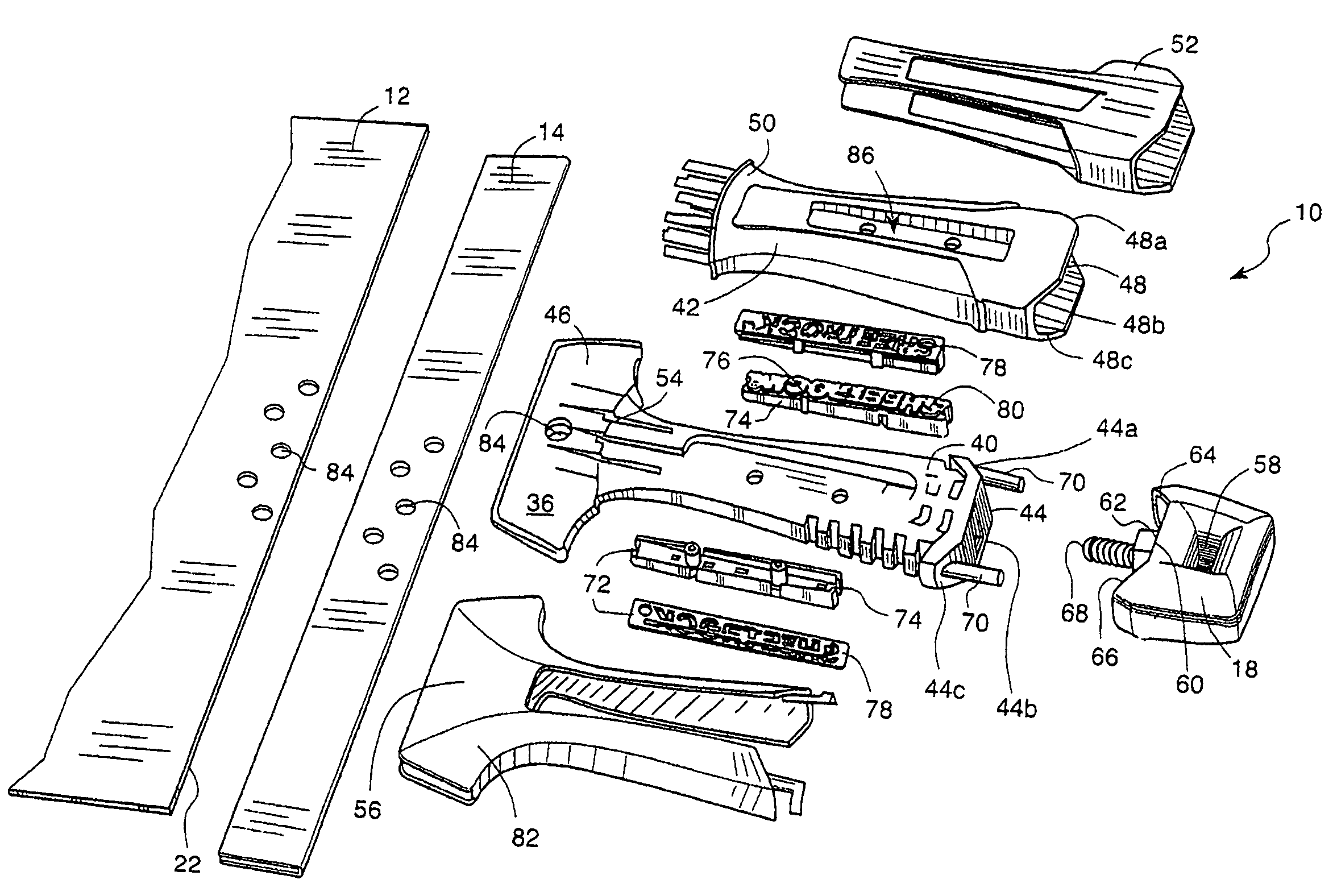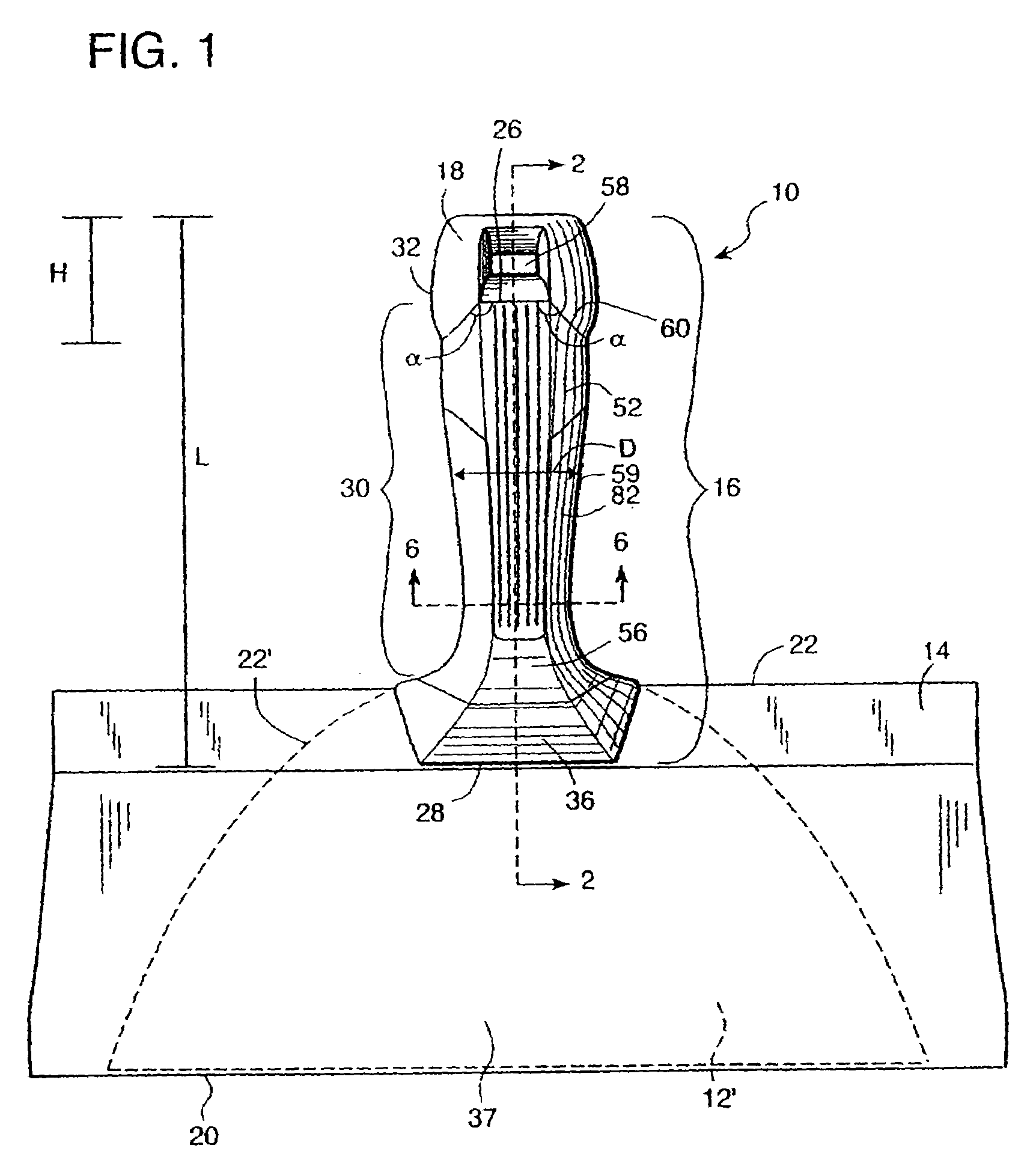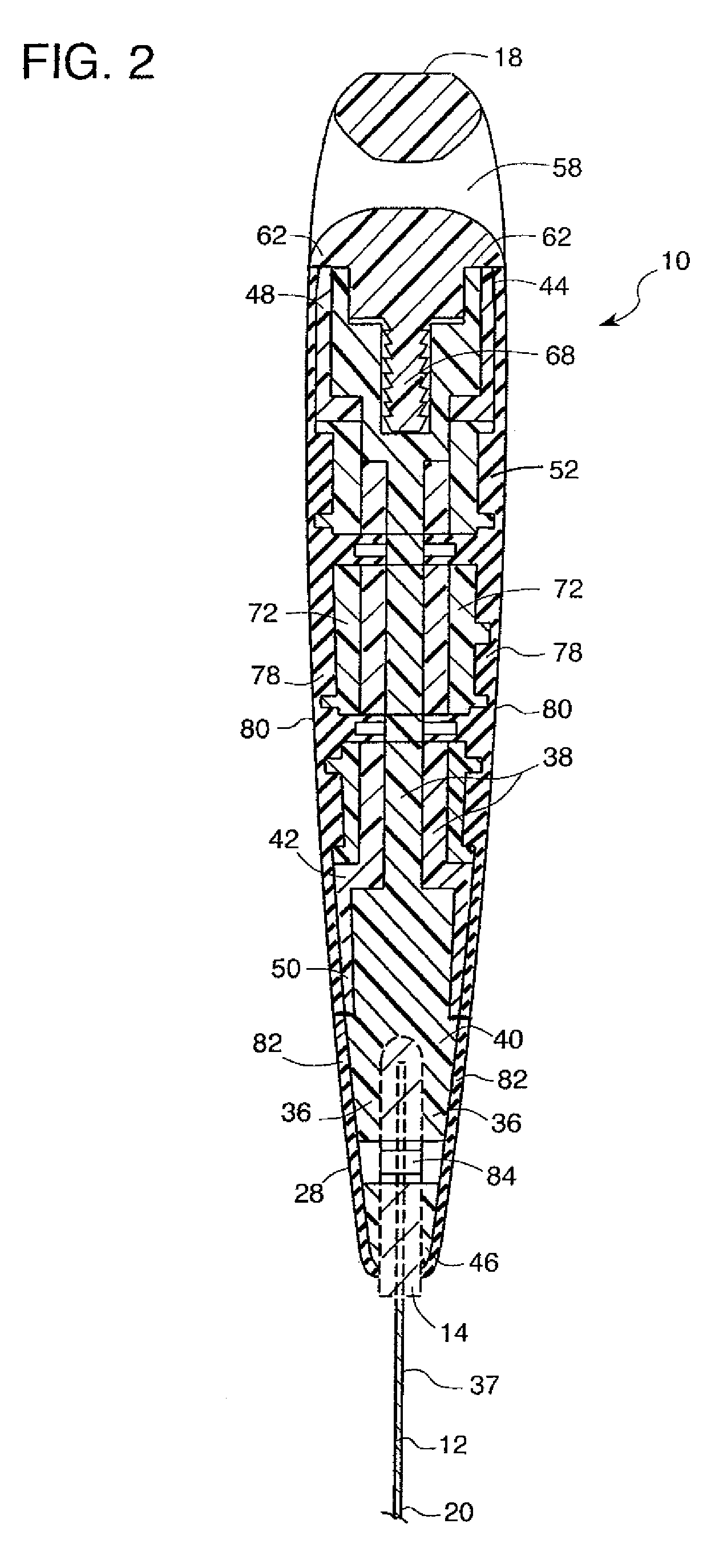Tool with enlarged hammer element
a tool and hammer element technology, applied in the field of hand tools, can solve the problems of low friction coefficient, slippage of the knife in the user's hand, and difficulty in holding the conventional taping knife during prolonged use, and achieve the effect of reducing the possibility of pinching the hand, and reducing the surface area
- Summary
- Abstract
- Description
- Claims
- Application Information
AI Technical Summary
Benefits of technology
Problems solved by technology
Method used
Image
Examples
Embodiment Construction
[0016]Referring to FIGS. 1 and 5, a taping knife generally designated 10 is preferably constructed of a flat metal blade 12, a reinforcing backing plate 14, a handle 16, and a hammer element 18. The blade 12 has a working edge 20 and an attachment edge 22 opposite the working edge 20. While other materials are contemplated, the blade 12 is preferably made of blued steel and the reinforcing backing plate 14 of aluminum. The shape of the blade 12 is as shown in FIG. 1, but it is envisioned that the handle 16 is usable with shorter blades 12′ having a curved attachment edge 22′ (shown in phantom in FIG. 1), and lacking a reinforcing backing plate 14 as are well known in the art. Furthermore, other blade shapes are contemplated, either with or without a reinforcing backing plate 14.
[0017]The handle 16 has at least one diameter D and includes distal 26 and proximal ends 28 and a body 30, the proximal end 28 is associated with the attachment edge 22. A feature of the present knife 10 is t...
PUM
 Login to View More
Login to View More Abstract
Description
Claims
Application Information
 Login to View More
Login to View More - R&D
- Intellectual Property
- Life Sciences
- Materials
- Tech Scout
- Unparalleled Data Quality
- Higher Quality Content
- 60% Fewer Hallucinations
Browse by: Latest US Patents, China's latest patents, Technical Efficacy Thesaurus, Application Domain, Technology Topic, Popular Technical Reports.
© 2025 PatSnap. All rights reserved.Legal|Privacy policy|Modern Slavery Act Transparency Statement|Sitemap|About US| Contact US: help@patsnap.com



